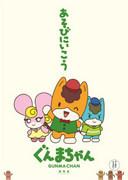A thorough review of the appeal and depth of "Self-Portrait"!

Self-Portrait - Kihachiro Kawamoto's journey of self-discovery and creativity■ Public MediaIndependent Production ■ Original MediaAnime Original ■ Release date1988 ■ Director・Direction: Kihachiro Kawamoto ■ Production・Production cooperation: Hiroaki Suzuki (Althea Four) ■ StoryKawamoto Doll, made of clay, kneads white clay to create a doll. The finished product is a young girl in a kimono. However, when the girl twists her body, she transforms into an ogre with horns and fangs. Kawamoto crushes the ogre, but the ogre, not to be outdone, hits back by crushing Kawamoto with both hands. The ogre also gives Kawamoto horns and fangs, turning him into an ogre. Kawamoto and the ogre repeatedly crush each other to the tune of "Inochi Kurenai" sung by Segawa Eiko. ■Explanation"Self-Portrait" was a project to connect ten-second shorts made by animators from five countries into one animation, but Kawamoto created a one-minute version to go with his own part, a song by Eiko Segawa. The puppets were designed by Masahiro Katayama. Kawamoto creates puppets with a variety of shapes, but says that "making my own puppets is difficult." Kawamoto, Renzo Kinoshita, and Osamu Tezuka participated from Japan, and a total of 19 people from overseas, including Jiri Barta and Jan Švankmajer, contributed works. ■ Main staff・Direction: Kihachiro Kawamoto ・Puppet art: Kihachiro Kawamoto ・Character design: Masahiro Katayama ・Animation: Hirokazu Minegishi ・Cinematography: Minoru Tamura ・Production cooperation: Hiroaki Suzuki (Althea Fo) ■Detailed reviewKihachiro Kawamoto's "Self-Portrait" is a work depicting a journey of self-discovery and creativity, and its profound theme and unique expression symbolize his pursuit of the artistic quality of animation. This work was produced independently in 1988 and released as an original anime film. Kawamoto himself was in charge of direction and puppet art, and Masahiro Katayama was in charge of character design. The story is very simple, but contains a profound message. It begins with Kawamoto Doll creating a young girl from white clay. However, the girl turns into a demon, and Kawamoto and the demon start to crush each other. This sequence symbolizes the relationship between self and other, and the cycle of creation and destruction. Eiko Segawa's song "Inochi Kurenai" enhances this scene, adding depth to the overall atmosphere of the work. This work was produced as part of a collection of short films that included the participation of animators from five countries around the world, but Kawamoto produced his own one-minute version. This shows his commitment to pursuing his own expression, and is unique in a way that sets him apart from other animators. In addition to Kawamoto, other Japanese participants included Kinoshita Renzo and Tezuka Osamu, and from overseas, Jiri Barta and Jan Švankmajer, among others, a total of 19 animators contributed work. By participating in such an international project, Kawamoto was given the opportunity to share his work with the world. While Kihachiro Kawamoto creates dolls of various shapes, he also says that "making my own dolls is difficult." This may indicate that he felt it was difficult to express himself. "Self-Portrait" is a work that gives us a glimpse into Kawamoto's inner world, and is an important piece for understanding the essence of his creative activities. ■Production background and technologyBehind the production of "Self-Portrait," we can see Kihachiro Kawamoto's deep love and inquisitiveness for puppet animation. He has been pursuing the possibilities of puppet animation using clay, and this work was born as a result. Hiroaki Suzuki (Althea Fo) participated as a production collaborator and provided technical support. Character designer Masahiro Katayama played a key role in bringing Kawamoto's vision to life, while animation was handled by Hirokazu Minegishi and cinematography was handled by Minoru Tamura. Together, they brought Kawamoto's creative vision to life. Technically, clay puppet animation is particularly challenging. Because clay is soft, it is difficult to precisely control the movements, and production requires advanced technique and patience. However, Kawamoto overcame these difficulties to realistically depict the scene in which the demon and Kawamoto crush each other. This is an example of his high level of technical skill and creativity. ■ Evaluation and influence of the work"Self-Portrait" is one of the most highly acclaimed works of Kihachiro Kawamoto. The reason for this is that it delves deeply into the universal theme of self-discovery and the visual impact of its unique expression. The film has been screened at many film festivals both in Japan and abroad and has received high praise. This work also influenced Kawamoto's other works. For example, his later work "Winter Day" also depicts a story on the theme of the relationship between the self and others. "Self-Portrait" can be said to be the origin of Kawamoto's creative activities, and is an essential piece for understanding his artistry. Furthermore, this work was a catalyst for expanding the possibilities of puppet animation. Kawamoto's method of expression using clay influenced other animators and opened up new creative avenues. This led to greater diversity in puppet animation, and paved the way for the creation of highly artistic works. ■ Recommendations and how to watch"Self-Portrait" is highly recommended for those who are seeing Kihachiro Kawamoto's work for the first time, as well as those who are already fans of his work. Through the theme of self-exploration, the work depicts the inner conflicts we face every day and the joy of creativity. The work combines visual impact with a profound message, and is sure to leave a strong impression on the viewer. As for how to watch them, they are often included in the collection of Kihachiro Kawamoto's works DVD or Blu-ray. They are also sometimes distributed online, so that is another way to watch them. In particular, they are often screened at film festivals and animation events, so we recommend taking advantage of these opportunities to watch them on a large screen. ■ Related works and other works by the artistOther works by Kihachiro Kawamoto include "Winter's Day" and "Dojoji." "Winter's Day" is a work that focuses on the relationship between the self and others, a theme that is shared with "Self-Portrait." "Dojoji" is based on a traditional Japanese story, and fully demonstrates Kawamoto's technical skills as a puppet animation artist. Viewing these works along with "Self-Portrait" will help viewers gain a deeper understanding of the full scope of Kawamoto's creative endeavors. The works of other participants in the international project "Self-Portrait," in which Kawamoto participated, are also interesting. By viewing unique animation works from each country, such as "The Nose" by Jiri Barta and "Alice" by Jan Švankmajer, you can feel the diversity of animation around the world. By viewing these works together with Kawamoto's work, you can understand the artistic value of animation from a broader perspective. ConclusionKihachiro Kawamoto's "Self-Portrait" is a work depicting a journey of self-discovery and creativity, and its profound theme and unique expression symbolize his pursuit of the artistry of animation. This work can be said to be the origin of Kawamoto's creative activities, and is essential for understanding his artistry. This work, which combines visual impact and a profound message, will leave a strong impression on the viewer. Viewing it together with Kawamoto's other works will provide a deeper understanding of the full scope of his creative activities. |
<<: The appeal and reviews of "Little Lord Ceddie": A moving story and deep characters
>>: Self-Portrait Review: A profound journey of self-discovery
Recommend
The appeal and evaluation of "Big Windup!": A moving film depicting the youth of baseball
"Big Windup!" - A masterpiece anime dep...
"The Wandering Earth: Leap 2020 Special Edition" has new creative content in the project filing
According to the project approval announcement of...
Appreciate the fusion of intuition and algorithms! What is the appeal of "Intuition x Algorithm♪"?
All-round review and recommendation of "Intu...
The director of the animated version of "The Little Mermaid" criticized the live-action version: telling a good story is more important than ZZZQ
Last year, Disney's live-action "The Lit...
The first PV of the third season of "That Time I Got Reincarnated as a Slime" was released and will premiere on April 5
The third season of the animation "That Time...
The trailer for the famous D&D running group CR crowdfunding animation "The Legend of Vox Machina" was released
The official trailer for "The Legend of Vox ...
Marvel's "Wonder Woman" is here: "Captain Marvel" stills are exposed for the first time
According to foreign media reports, the first sti...
The appeal and reviews of Four Cards: an anime experience not to be missed
Four of a Kind: Five minutes of magic and adventu...
Cooked a bag of instant noodles? Nissin launches instant noodles in collaboration with Demon Slayer
Today (July 12), the official Twitter account of ...
The movie "Mr. Red Carpet" has been rescheduled to be released on March 15
According to Fast Technology on March 4, the movi...
The popular character Fushiguro Megumi from Jujutsu Kaisen has a cool and exquisite newbie office
The newbie office of the popular character Fushig...
Review of "Our Seven Days War": A story of youthful battles and friendship
"Our Seven Days War": A story of youthf...
The appeal and reviews of "Mai-HiME": a must-see anime
My-HiME: A story of destiny and bonds My-HiME is ...
Ryan Reynolds reveals how he successfully prevented leaks during the filming of Deadpool vs. Wolverine
There are a lot of cameo characters in the movie ...
Trailer for "21 Bridges", a new film directed by "Game of Thrones" and "Black Panther"
The new crime action thriller "21 Bridges&qu...









